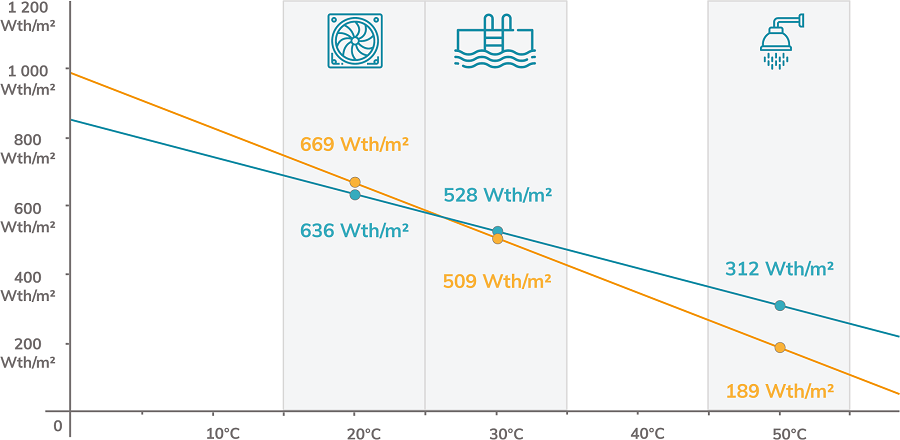What is the thermal performance of the Dualsun SPRING panel?
As with all thermal solar panels, the power of our Dualsun SPRING panels varies according to the temperature of the water in the panel.
At low temperatures (for coupling with glycol water/water heat pumps and for swimming pool heating in some areas), we recommend using the non-insulated version of our panels.
For domestic hot water (and swimming pool heating in some areas), we recommend using the insulated version of our panels.
Thermal power as a function of the T° of water in the panel and per application Performance from values a0, a1 (wind u=1m/s) in STC conditions (Tair = 25°C, G = 1000 W/m2) | ||
| ||
The graph below shows the thermal power of our SPRING panels (non-insulated and insulated versions) through the different applications for which they can be used (each of these applications has a different operating temperature). |
Explanations on the thermal power graph
The thermal power (Pth) of a solar panel is calculated with the following formula: |
a0 = Panel optical efficiency
a1 = Loss coefficient [W/K/m²]
A = Panel area [m²]
G = Solar irradiation [W/m²]
∆T (water-air) = Tm - Ta [°C]
Tm = Average temperature of the fluid in the panel = (Tin + Tout) / 2 [°C]
Ta = Ambient air temperature [°C]
To improve the efficiency of a thermal solar panel
Maximize a0 to absorb maximum solar power
Maximize a1 when the fluid temperature is lower than the ambient air temperature, hence to improve thermal exchanges with the environment. In this case, use the non-insulated version of the SPRING panel.
Minimize a1 when the fluid temperature is higher than the ambient air temperature (hot water production). The insulated version of the SPRING panel must be used.
If you'd like to learn more:
To achieve optimum overall efficiency (electrical and thermal), the Dualsun engineering team has calculated the setting conditions of the installations according to the applications.
To know how the thermal power output of the SPRING panel changes according to outdoor conditions.
To learn how the temperature gradient of the SPRING panel changes according to outdoor conditions.

